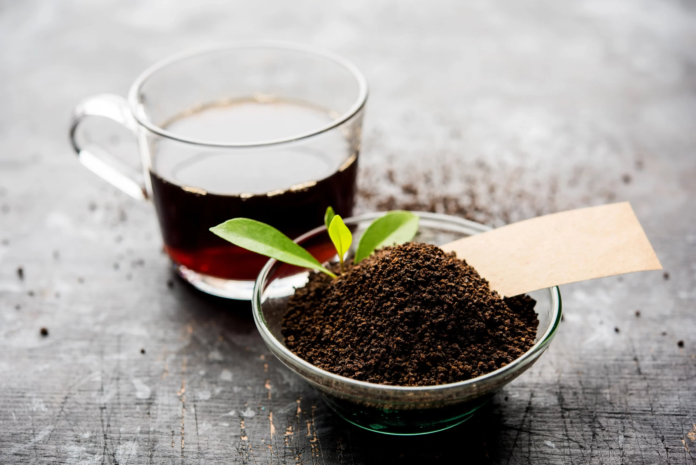“Are they saying we are drinking substandard tea?” asked Manoj Archibald, a planter from the Nilgiris, last week. He was reacting to an advertisement that promoted whole leaf teas while deriding CTC (crush, tear, and curl) and dust teas. When tea brands promote whole leaf tea as the superior choice, couldn’t they do so without putting down other types of tea? This question is not just about marketing but also about appreciating the diverse world of tea. Not long after that conversation, I read about Assam’s Hookhmol Tea fetching record prices of 1,500 rupees per kilo at the Kolkata tea auction for their CTC tea, achieving specialty status. This is notable, especially considering that the average price at auction for Assam CTC tea is under 1,300 rupees per kilo.
Understanding CTC and Dust Teas
CTC tea is named after the process it undergoes: crush, tear, and curl. This method was developed in the 1930s to meet the growing demand for tea bags and quick-brewing tea. The leaves are processed by machines that crush, tear, and curl them into small, hard pellets. Dust tea, on the other hand, consists of the finest particles left over after processing. Both types of tea are often used in commercial tea bags.
The Case for CTC Teas
1. Consistency and Convenience
CTC teas are known for their consistency in flavor and strength, making them ideal for mass production. This consistency ensures that each cup of tea tastes the same, which is a significant advantage for everyday tea drinkers who prefer a reliable flavor profile. Additionally, CTC teas brew quickly and produce a robust cup of tea, perfect for those who enjoy a strong, invigorating beverage without a long steeping time.
2. Economic Value
CTC teas offer excellent value for money. They are generally more affordable than whole leaf teas, making them accessible to a broader audience. This affordability does not equate to lower quality; instead, it reflects the efficiency of the production process. For many tea drinkers, especially in countries like India and Kenya, CTC tea is the staple choice, providing a daily dose of comfort and familiarity.
3. Cultural Significance
In many tea-drinking cultures, CTC tea holds a special place. In India, for instance, chai—made with CTC tea, milk, sugar, and spices—is more than just a beverage; it is a daily ritual and an integral part of social life. The robust nature of CTC tea makes it perfect for brewing chai, ensuring that the tea’s flavor stands out even when mixed with other strong ingredients.
The Specialty Status of CTC Teas
The recent auction of Assam’s Hookhmol Tea, fetching 1,500 rupees per kilo, highlights the potential for CTC teas to achieve specialty status. This record price reflects not only the quality of the tea but also the growing recognition of CTC teas as a product with its own merits. High-quality CTC teas are being crafted with the same care and attention as premium whole leaf teas, demonstrating that CTC can be a mark of excellence.
The Case for Dust Teas
1. Potency and Quick Brewing
Dust teas, despite their name, are prized for their potency. They brew quickly and yield a strong, flavorful cup of tea, which is why they are often used in tea bags. This quick brewing time makes dust teas convenient for busy individuals who want a satisfying cup of tea without waiting.
2. Affordability and Accessibility
Like CTC teas, dust teas are affordable and accessible. They provide a cost-effective option for tea drinkers, ensuring that quality tea is available to a wide range of consumers. In many developing countries, dust teas are the primary form of tea consumed, playing a crucial role in daily nutrition and hydration.
3. Versatility
Dust teas are highly versatile and can be used in various tea blends and recipes. Their strong flavor makes them an excellent base for chai and other spiced teas. Additionally, dust teas can be infused into cooking and baking, adding a unique tea flavor to both sweet and savory dishes.
Challenging the Stigma
The perception that whole leaf teas are inherently superior to CTC and dust teas is rooted in a misunderstanding of the different processing methods and their intended purposes. Each type of tea has its own unique characteristics and benefits, catering to different preferences and needs. It is important to appreciate the diversity within the world of tea and recognize that quality can be found across all types of tea, from whole leaf to CTC and dust.
The Role of Marketing
Tea brands have a responsibility to promote their products without undermining others. Marketing strategies should celebrate the uniqueness of each type of tea rather than perpetuate hierarchies that devalue certain kinds. By educating consumers about the various types of tea and their respective qualities, brands can foster a more inclusive appreciation of tea.
In defending CTC and dust teas, we acknowledge the richness and diversity of the tea world. These teas offer consistency, convenience, economic value, and cultural significance. They cater to a broad audience and hold a special place in many tea-drinking traditions. High-quality CTC teas, like Assam’s Hookhmol, demonstrate that excellence is not confined to whole leaf teas.
Rather than viewing tea types hierarchically, we should celebrate their differences and the unique experiences they offer. Whether you enjoy the robust strength of a CTC tea, the quick brew of a dust tea, or the delicate nuances of a whole leaf tea, each type of tea has its place in the vast tapestry of tea culture. By appreciating this diversity, we can elevate our tea-drinking experience and honor the craft of tea-making in all its forms.
Disclaimer: The thoughts and opinions stated in this article are solely those of the author and do not necessarily reflect the views or positions of any entities represented and we recommend referring to more recent and reliable sources for up-to-date information.



